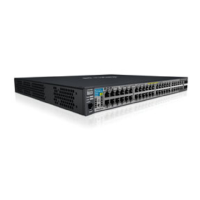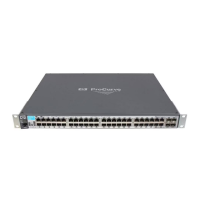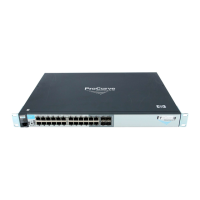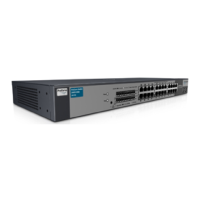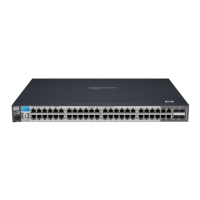Multicast Listener Discovery (MLD) Snooping
Introduction to MLD Snooping
Fast leaves and forced fast leaves. The fast leave and forced fast leave
functions can help to prune unnecessary multicast traffic when an MLD host
issues a leave request from a multicast address. Fast leave is enabled by
default and forced fast leave is disabled by default. Both functions are applied
to individual ports.
Which function to use depends on whether a port has more than one node
attached to it, as follows:
■ If a port has only one node attached to it, then when the switch sees a
leave request from that node (an MLD host) it knows that it does not need
to send any more multicast traffic for that multicast address to the host’s
port. If fast leave is enabled (the default setting), the switch stops sending
the multicast traffic immediately. If fast leave is disabled, the switch
continues to look for join requests from the host in response to group-
specific queries sent to the port. The interval during which the switch
looks for join requests is brief and depends on the forced fast leave setting:
if forced fast leave is enabled for the port, it is equal to the “forced fast
leave interval” (typically a couple of seconds or less); if forced fast leave
is disabled for the port, the period is about 10 seconds (governed by the
MLD standard). When this process has completed the multicast traffic for
the group will be stopped (unless the switch sees a new join request).
■ If there are multiple nodes attached to a single port, then a leave request
from one of those nodes (an MLD host) does not provide enough infor-
mation for the switch to stop sending multicast traffic to the port. In this
situation the fast leave function does not operate. The switch continues
to look for join requests from any MLD hosts connected to the port, in
response to group-specific queries sent to the port. As in the case
described above for a single-node port that is not enabled for fast leave,
the interval during which the switch looks for join requests is brief and
depends on the forced fast leave setting. If forced fast leave is enabled for
the port, it is equal to the “forced fast leave interval” (typically a couple
of seconds or less); if forced fast leave is disabled for the port, the period
is about 10 seconds (governed by the MLD standard). When this process
has completed the multicast traffic for the group will be stopped unless
the switch sees a new join request. This reduces the number of multicast
packets forwarded unnecessarily.
7-7

